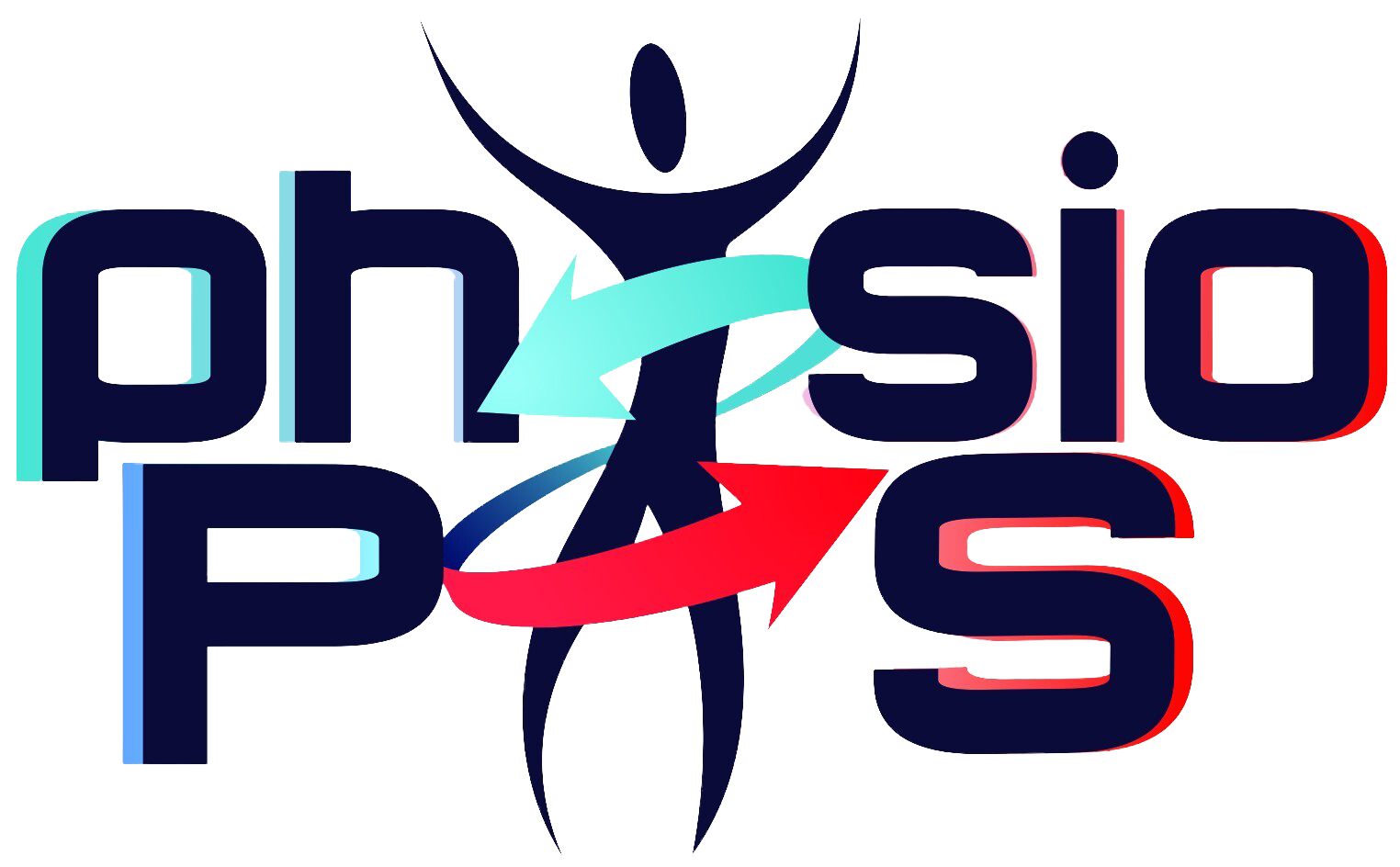Oxidative stress is a process whereby, Free Radicals that are produced by the body, cause injury to the tissues themselves; especially one of the most important organelles in the cell. The organelle that produces energy: The Mitochondria. Oxidation is the process of burning, think of fire, or rusting, think of iron. While oxygen is very important to the body, just like anything else in life, too much is not healthy: too little fire does not heat or cook, too much fire destroys, just enough fire sustains life. Oxidative stress is the process of burning healthy cells or cell structures, like Mitochondria. A common example of a Free Radical is a loose Oxygen ion. These loose Oxygen ions look to attached themselves (thereby neutralizing themselves) to other loose Oxygen ions or other molecules that are chemically or electrically suited to bind with them. Most of the time Free Radicals are not healthy; however, under the correct circumstances and at the correct time, Free Radicals are very useful. An example of how they are used is by the immune system as a first defense to “burn-out” any new infections. Another common example is in programmed cell death to “burn” away damaged or useless cells.  It seems ironic, however, the largest producers of Free Radicals, in healthy cells, is the Mitochondria themselves. Just like any power plant, there is waste (pollution) generated in the process of producing power. Mitochondria are the power plants of the cells and the body. It produces Adenosine Triphosphate (ATP) as the energy molecule, and some of the waste products (pollutants) are Free Radicals. Under healthy conditions, the body uses these Free
Radicals to advantage, as mentioned above. Under unhealthy conditions, the body requires Antioxidants to neutralize the Free Radicals that are not used. Under chronic conditions, the body tends to need more than it is able to produce. In all of these conditions, there is an appropriate Antioxidant-Oxidant Balance that sustains health. While the exact amounts are unknown, fortunately there is no such things as too many Antioxidants. It is like having “too many” fire extinguishers. The less used the better and if they are never used, they are not wasted. To that end, a well-established and maintained pool of Antioxidants is always healthful.
It seems ironic, however, the largest producers of Free Radicals, in healthy cells, is the Mitochondria themselves. Just like any power plant, there is waste (pollution) generated in the process of producing power. Mitochondria are the power plants of the cells and the body. It produces Adenosine Triphosphate (ATP) as the energy molecule, and some of the waste products (pollutants) are Free Radicals. Under healthy conditions, the body uses these Free
Radicals to advantage, as mentioned above. Under unhealthy conditions, the body requires Antioxidants to neutralize the Free Radicals that are not used. Under chronic conditions, the body tends to need more than it is able to produce. In all of these conditions, there is an appropriate Antioxidant-Oxidant Balance that sustains health. While the exact amounts are unknown, fortunately there is no such things as too many Antioxidants. It is like having “too many” fire extinguishers. The less used the better and if they are never used, they are not wasted. To that end, a well-established and maintained pool of Antioxidants is always healthful.
 The body has natural Antioxidants to sequester, or neutralize, Free Radicals to prevent oxidative stress from injuring tissues and destroying cells. Natural Antioxidants include Vitamins A, C, & E, Glutathione, Selenium, Alpha Lipoic Acid (ALA) and Coenzyme Q-10 (CoQ10). Many scientists feel that ALA is the ideal antioxidant because it is both a lipid and water soluble (it can dissolve in both lipid and water environments) and can cross the Blood-Brain
Barrier. It is absorbed rapidly through the Gastrointestinal (GI) tract high up in the digestive system and it is immediately available to neutralize free radicals quickly. It has also been shown to recycle Vitamin C and Vitamin E in the body. Vitamin C is only water soluble and Vitamin E is only lipid soluble. Because ALA is both liquid and lipid soluble, it can pass the Blood-Brain Barrier and increase available brain energy. Not only can ALA recycle Vitamin C & E but also Glutathione. Glutathione is probably the most important intracellular Antioxidant. The mechanism on how Glutathione is recycled is very complicated.
The body has natural Antioxidants to sequester, or neutralize, Free Radicals to prevent oxidative stress from injuring tissues and destroying cells. Natural Antioxidants include Vitamins A, C, & E, Glutathione, Selenium, Alpha Lipoic Acid (ALA) and Coenzyme Q-10 (CoQ10). Many scientists feel that ALA is the ideal antioxidant because it is both a lipid and water soluble (it can dissolve in both lipid and water environments) and can cross the Blood-Brain
Barrier. It is absorbed rapidly through the Gastrointestinal (GI) tract high up in the digestive system and it is immediately available to neutralize free radicals quickly. It has also been shown to recycle Vitamin C and Vitamin E in the body. Vitamin C is only water soluble and Vitamin E is only lipid soluble. Because ALA is both liquid and lipid soluble, it can pass the Blood-Brain Barrier and increase available brain energy. Not only can ALA recycle Vitamin C & E but also Glutathione. Glutathione is probably the most important intracellular Antioxidant. The mechanism on how Glutathione is recycled is very complicated.
 Glutathione is an indispensable Antioxidant and is synthesized within the Mitochondria and consists of three Amino Acids, Cysteine, Glutamic Acid, and Glycine. Glutathione is not easily absorbed orally and cannot pass through the Mitochondrial membrane so easily. Therefore, anything that preserves the body’s natural production of Glutathione and keeps the concentration up is valuable. This is where ALA comes in as a very important Antioxidant. It recycles Glutathione and replenishes the body’s stores. Glutathione is a very important component of several enzyme systems in the body that are organ-protective from disease. There is some data to suggest that ALA is also an excellent chelating agent and protects us from heavy metals, although this is beyond the scope of this discussion.
Glutathione is an indispensable Antioxidant and is synthesized within the Mitochondria and consists of three Amino Acids, Cysteine, Glutamic Acid, and Glycine. Glutathione is not easily absorbed orally and cannot pass through the Mitochondrial membrane so easily. Therefore, anything that preserves the body’s natural production of Glutathione and keeps the concentration up is valuable. This is where ALA comes in as a very important Antioxidant. It recycles Glutathione and replenishes the body’s stores. Glutathione is a very important component of several enzyme systems in the body that are organ-protective from disease. There is some data to suggest that ALA is also an excellent chelating agent and protects us from heavy metals, although this is beyond the scope of this discussion. In regard to the nervous system, ALA is probably the most important Antioxidant protecting neural tissue. There is an abnormal protein known as Alpha-Synuclein which is highly expressed in neuronal Mitochondria. It causes neurological damage in diseases such as Lewy Body Dementia, Parkinson’s and in a condition known as Neurogenic Orthostatic Hypotension. It may also be operative in diseases, such as Diabetes, Hypertension and Dementia. ALA suppresses neurological intracellular accumulation of Alpha-Synuclein proteins. Therefore, it is extremely important. It is believed that Orthostatic Dysfunction disorders, which can cause autonomic disability, ALA may also be important by preventing the accumulation of Alpha- Synuclein proteins.
CoQ10 is also an extremely important Antioxidant in the human body. Whereas ALA is extremely important in protecting neural tissue, CoQ10 is extremely important in protecting cardiac and vascular tissue. There are many studies which have shown its importance in Congestive Heart Failure states. CoQ10 is an essential lipid soluble Antioxidant which protects cellular membranes and also circulates lipoproteins against Free Radical-induced Oxidative Stress. When cholesterol molecules become oxidized, they are more readily taken into the artery walls to cause atherosclerotic plaques and CoQ10 is one of the Antioxidants which protect against the oxidation of lipid
molecules.
CoQ10 is an essential component of the electron transport chain which functions as an electron carrier and produces ATP, the energy molecule of the body. Therefore, CoQ10 is important for preserving the body’s energy. There are many different randomized trials of CoQ10 supplementation, including chronic stable Heart Failure. Many different methodologies have been used. However, CoQ10 is a biologically feasible protective mechanism to preserve the heart function. We have seen this to be the case, empirically, especially for patients who have had surgery. Literature has shown there is increasing interest in using CoQ10 for the treatment of Mitochondrial disorders because it improves ATP regeneration. We have found the combination of CoQ10 and ALA to be especially helpful in improving objective measures of autonomic dysfunction in patients who have dysautonomia and have been tested in our autonomic lab and served as their own controls.
Oxidative stress and inflammation contribute to most human diseases. Mitochondrial damage can also give rise to abnormalities in the immune system. There is a complex interaction between oxidative stress and cell division and aging. More research is needed in this area. However, the abundance of data suggests that Antioxidants are beneficial in maintain good health. That is not to say that a diet that is rich and high in Antioxidants such as the Mediterranean diet may not be the first preferred mechanism of these protective compounds. However, we believe that appropriate concentrations and supplements of Antioxidants, specifically CoQ10 and ALA, are important for maintaining proper balance of oxidants and antioxidants and in preventing nerve and cardiovascular tissue damage.
We believe that antioxidants are important in preserving ATP production by Mitochondria and maintaining energy in the nervous system, the brain, the heart, and the vascular system. By reducing or improving Orthostatic Intolerance syndromes, Antioxidants are part of a complex program which involves exercise, diet, stress reduction, proper sleep and hydration. All together this program is very beneficial in improving Chronic Fatigue symptoms.
In regard to the nervous system, ALA is probably the most important Antioxidant protecting neural tissue. There is an abnormal protein known as Alpha-Synuclein which is highly expressed in neuronal Mitochondria. It causes neurological damage in diseases such as Lewy Body Dementia, Parkinson’s and in a condition known as Neurogenic Orthostatic Hypotension. It may also be operative in diseases, such as Diabetes, Hypertension and Dementia. ALA suppresses neurological intracellular accumulation of Alpha-Synuclein proteins. Therefore, it is extremely important. It is believed that Orthostatic Dysfunction disorders, which can cause autonomic disability, ALA may also be important by preventing the accumulation of Alpha- Synuclein proteins.
CoQ10 is also an extremely important Antioxidant in the human body. Whereas ALA is extremely important in protecting neural tissue, CoQ10 is extremely important in protecting cardiac and vascular tissue. There are many studies which have shown its importance in Congestive Heart Failure states. CoQ10 is an essential lipid soluble Antioxidant which protects cellular membranes and also circulates lipoproteins against Free Radical-induced Oxidative Stress. When cholesterol molecules become oxidized, they are more readily taken into the artery walls to cause atherosclerotic plaques and CoQ10 is one of the Antioxidants which protect against the oxidation of lipid
molecules.
CoQ10 is an essential component of the electron transport chain which functions as an electron carrier and produces ATP, the energy molecule of the body. Therefore, CoQ10 is important for preserving the body’s energy. There are many different randomized trials of CoQ10 supplementation, including chronic stable Heart Failure. Many different methodologies have been used. However, CoQ10 is a biologically feasible protective mechanism to preserve the heart function. We have seen this to be the case, empirically, especially for patients who have had surgery. Literature has shown there is increasing interest in using CoQ10 for the treatment of Mitochondrial disorders because it improves ATP regeneration. We have found the combination of CoQ10 and ALA to be especially helpful in improving objective measures of autonomic dysfunction in patients who have dysautonomia and have been tested in our autonomic lab and served as their own controls.
Oxidative stress and inflammation contribute to most human diseases. Mitochondrial damage can also give rise to abnormalities in the immune system. There is a complex interaction between oxidative stress and cell division and aging. More research is needed in this area. However, the abundance of data suggests that Antioxidants are beneficial in maintain good health. That is not to say that a diet that is rich and high in Antioxidants such as the Mediterranean diet may not be the first preferred mechanism of these protective compounds. However, we believe that appropriate concentrations and supplements of Antioxidants, specifically CoQ10 and ALA, are important for maintaining proper balance of oxidants and antioxidants and in preventing nerve and cardiovascular tissue damage.
We believe that antioxidants are important in preserving ATP production by Mitochondria and maintaining energy in the nervous system, the brain, the heart, and the vascular system. By reducing or improving Orthostatic Intolerance syndromes, Antioxidants are part of a complex program which involves exercise, diet, stress reduction, proper sleep and hydration. All together this program is very beneficial in improving Chronic Fatigue symptoms.
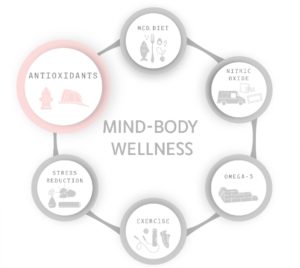 It seems ironic, however, the largest producers of Free Radicals, in healthy cells, is the Mitochondria themselves. Just like any power plant, there is waste (pollution) generated in the process of producing power. Mitochondria are the power plants of the cells and the body. It produces Adenosine Triphosphate (ATP) as the energy molecule, and some of the waste products (pollutants) are Free Radicals. Under healthy conditions, the body uses these Free
Radicals to advantage, as mentioned above. Under unhealthy conditions, the body requires Antioxidants to neutralize the Free Radicals that are not used. Under chronic conditions, the body tends to need more than it is able to produce. In all of these conditions, there is an appropriate Antioxidant-Oxidant Balance that sustains health. While the exact amounts are unknown, fortunately there is no such things as too many Antioxidants. It is like having “too many” fire extinguishers. The less used the better and if they are never used, they are not wasted. To that end, a well-established and maintained pool of Antioxidants is always healthful.
It seems ironic, however, the largest producers of Free Radicals, in healthy cells, is the Mitochondria themselves. Just like any power plant, there is waste (pollution) generated in the process of producing power. Mitochondria are the power plants of the cells and the body. It produces Adenosine Triphosphate (ATP) as the energy molecule, and some of the waste products (pollutants) are Free Radicals. Under healthy conditions, the body uses these Free
Radicals to advantage, as mentioned above. Under unhealthy conditions, the body requires Antioxidants to neutralize the Free Radicals that are not used. Under chronic conditions, the body tends to need more than it is able to produce. In all of these conditions, there is an appropriate Antioxidant-Oxidant Balance that sustains health. While the exact amounts are unknown, fortunately there is no such things as too many Antioxidants. It is like having “too many” fire extinguishers. The less used the better and if they are never used, they are not wasted. To that end, a well-established and maintained pool of Antioxidants is always healthful.
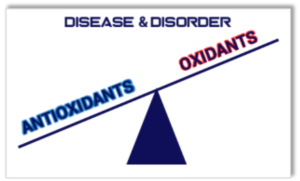 The body has natural Antioxidants to sequester, or neutralize, Free Radicals to prevent oxidative stress from injuring tissues and destroying cells. Natural Antioxidants include Vitamins A, C, & E, Glutathione, Selenium, Alpha Lipoic Acid (ALA) and Coenzyme Q-10 (CoQ10). Many scientists feel that ALA is the ideal antioxidant because it is both a lipid and water soluble (it can dissolve in both lipid and water environments) and can cross the Blood-Brain
Barrier. It is absorbed rapidly through the Gastrointestinal (GI) tract high up in the digestive system and it is immediately available to neutralize free radicals quickly. It has also been shown to recycle Vitamin C and Vitamin E in the body. Vitamin C is only water soluble and Vitamin E is only lipid soluble. Because ALA is both liquid and lipid soluble, it can pass the Blood-Brain Barrier and increase available brain energy. Not only can ALA recycle Vitamin C & E but also Glutathione. Glutathione is probably the most important intracellular Antioxidant. The mechanism on how Glutathione is recycled is very complicated.
The body has natural Antioxidants to sequester, or neutralize, Free Radicals to prevent oxidative stress from injuring tissues and destroying cells. Natural Antioxidants include Vitamins A, C, & E, Glutathione, Selenium, Alpha Lipoic Acid (ALA) and Coenzyme Q-10 (CoQ10). Many scientists feel that ALA is the ideal antioxidant because it is both a lipid and water soluble (it can dissolve in both lipid and water environments) and can cross the Blood-Brain
Barrier. It is absorbed rapidly through the Gastrointestinal (GI) tract high up in the digestive system and it is immediately available to neutralize free radicals quickly. It has also been shown to recycle Vitamin C and Vitamin E in the body. Vitamin C is only water soluble and Vitamin E is only lipid soluble. Because ALA is both liquid and lipid soluble, it can pass the Blood-Brain Barrier and increase available brain energy. Not only can ALA recycle Vitamin C & E but also Glutathione. Glutathione is probably the most important intracellular Antioxidant. The mechanism on how Glutathione is recycled is very complicated.
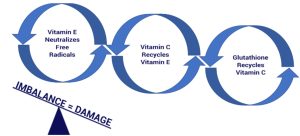 Glutathione is an indispensable Antioxidant and is synthesized within the Mitochondria and consists of three Amino Acids, Cysteine, Glutamic Acid, and Glycine. Glutathione is not easily absorbed orally and cannot pass through the Mitochondrial membrane so easily. Therefore, anything that preserves the body’s natural production of Glutathione and keeps the concentration up is valuable. This is where ALA comes in as a very important Antioxidant. It recycles Glutathione and replenishes the body’s stores. Glutathione is a very important component of several enzyme systems in the body that are organ-protective from disease. There is some data to suggest that ALA is also an excellent chelating agent and protects us from heavy metals, although this is beyond the scope of this discussion.
Glutathione is an indispensable Antioxidant and is synthesized within the Mitochondria and consists of three Amino Acids, Cysteine, Glutamic Acid, and Glycine. Glutathione is not easily absorbed orally and cannot pass through the Mitochondrial membrane so easily. Therefore, anything that preserves the body’s natural production of Glutathione and keeps the concentration up is valuable. This is where ALA comes in as a very important Antioxidant. It recycles Glutathione and replenishes the body’s stores. Glutathione is a very important component of several enzyme systems in the body that are organ-protective from disease. There is some data to suggest that ALA is also an excellent chelating agent and protects us from heavy metals, although this is beyond the scope of this discussion.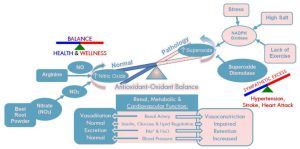 In regard to the nervous system, ALA is probably the most important Antioxidant protecting neural tissue. There is an abnormal protein known as Alpha-Synuclein which is highly expressed in neuronal Mitochondria. It causes neurological damage in diseases such as Lewy Body Dementia, Parkinson’s and in a condition known as Neurogenic Orthostatic Hypotension. It may also be operative in diseases, such as Diabetes, Hypertension and Dementia. ALA suppresses neurological intracellular accumulation of Alpha-Synuclein proteins. Therefore, it is extremely important. It is believed that Orthostatic Dysfunction disorders, which can cause autonomic disability, ALA may also be important by preventing the accumulation of Alpha- Synuclein proteins.
CoQ10 is also an extremely important Antioxidant in the human body. Whereas ALA is extremely important in protecting neural tissue, CoQ10 is extremely important in protecting cardiac and vascular tissue. There are many studies which have shown its importance in Congestive Heart Failure states. CoQ10 is an essential lipid soluble Antioxidant which protects cellular membranes and also circulates lipoproteins against Free Radical-induced Oxidative Stress. When cholesterol molecules become oxidized, they are more readily taken into the artery walls to cause atherosclerotic plaques and CoQ10 is one of the Antioxidants which protect against the oxidation of lipid
molecules.
CoQ10 is an essential component of the electron transport chain which functions as an electron carrier and produces ATP, the energy molecule of the body. Therefore, CoQ10 is important for preserving the body’s energy. There are many different randomized trials of CoQ10 supplementation, including chronic stable Heart Failure. Many different methodologies have been used. However, CoQ10 is a biologically feasible protective mechanism to preserve the heart function. We have seen this to be the case, empirically, especially for patients who have had surgery. Literature has shown there is increasing interest in using CoQ10 for the treatment of Mitochondrial disorders because it improves ATP regeneration. We have found the combination of CoQ10 and ALA to be especially helpful in improving objective measures of autonomic dysfunction in patients who have dysautonomia and have been tested in our autonomic lab and served as their own controls.
Oxidative stress and inflammation contribute to most human diseases. Mitochondrial damage can also give rise to abnormalities in the immune system. There is a complex interaction between oxidative stress and cell division and aging. More research is needed in this area. However, the abundance of data suggests that Antioxidants are beneficial in maintain good health. That is not to say that a diet that is rich and high in Antioxidants such as the Mediterranean diet may not be the first preferred mechanism of these protective compounds. However, we believe that appropriate concentrations and supplements of Antioxidants, specifically CoQ10 and ALA, are important for maintaining proper balance of oxidants and antioxidants and in preventing nerve and cardiovascular tissue damage.
We believe that antioxidants are important in preserving ATP production by Mitochondria and maintaining energy in the nervous system, the brain, the heart, and the vascular system. By reducing or improving Orthostatic Intolerance syndromes, Antioxidants are part of a complex program which involves exercise, diet, stress reduction, proper sleep and hydration. All together this program is very beneficial in improving Chronic Fatigue symptoms.
In regard to the nervous system, ALA is probably the most important Antioxidant protecting neural tissue. There is an abnormal protein known as Alpha-Synuclein which is highly expressed in neuronal Mitochondria. It causes neurological damage in diseases such as Lewy Body Dementia, Parkinson’s and in a condition known as Neurogenic Orthostatic Hypotension. It may also be operative in diseases, such as Diabetes, Hypertension and Dementia. ALA suppresses neurological intracellular accumulation of Alpha-Synuclein proteins. Therefore, it is extremely important. It is believed that Orthostatic Dysfunction disorders, which can cause autonomic disability, ALA may also be important by preventing the accumulation of Alpha- Synuclein proteins.
CoQ10 is also an extremely important Antioxidant in the human body. Whereas ALA is extremely important in protecting neural tissue, CoQ10 is extremely important in protecting cardiac and vascular tissue. There are many studies which have shown its importance in Congestive Heart Failure states. CoQ10 is an essential lipid soluble Antioxidant which protects cellular membranes and also circulates lipoproteins against Free Radical-induced Oxidative Stress. When cholesterol molecules become oxidized, they are more readily taken into the artery walls to cause atherosclerotic plaques and CoQ10 is one of the Antioxidants which protect against the oxidation of lipid
molecules.
CoQ10 is an essential component of the electron transport chain which functions as an electron carrier and produces ATP, the energy molecule of the body. Therefore, CoQ10 is important for preserving the body’s energy. There are many different randomized trials of CoQ10 supplementation, including chronic stable Heart Failure. Many different methodologies have been used. However, CoQ10 is a biologically feasible protective mechanism to preserve the heart function. We have seen this to be the case, empirically, especially for patients who have had surgery. Literature has shown there is increasing interest in using CoQ10 for the treatment of Mitochondrial disorders because it improves ATP regeneration. We have found the combination of CoQ10 and ALA to be especially helpful in improving objective measures of autonomic dysfunction in patients who have dysautonomia and have been tested in our autonomic lab and served as their own controls.
Oxidative stress and inflammation contribute to most human diseases. Mitochondrial damage can also give rise to abnormalities in the immune system. There is a complex interaction between oxidative stress and cell division and aging. More research is needed in this area. However, the abundance of data suggests that Antioxidants are beneficial in maintain good health. That is not to say that a diet that is rich and high in Antioxidants such as the Mediterranean diet may not be the first preferred mechanism of these protective compounds. However, we believe that appropriate concentrations and supplements of Antioxidants, specifically CoQ10 and ALA, are important for maintaining proper balance of oxidants and antioxidants and in preventing nerve and cardiovascular tissue damage.
We believe that antioxidants are important in preserving ATP production by Mitochondria and maintaining energy in the nervous system, the brain, the heart, and the vascular system. By reducing or improving Orthostatic Intolerance syndromes, Antioxidants are part of a complex program which involves exercise, diet, stress reduction, proper sleep and hydration. All together this program is very beneficial in improving Chronic Fatigue symptoms. 